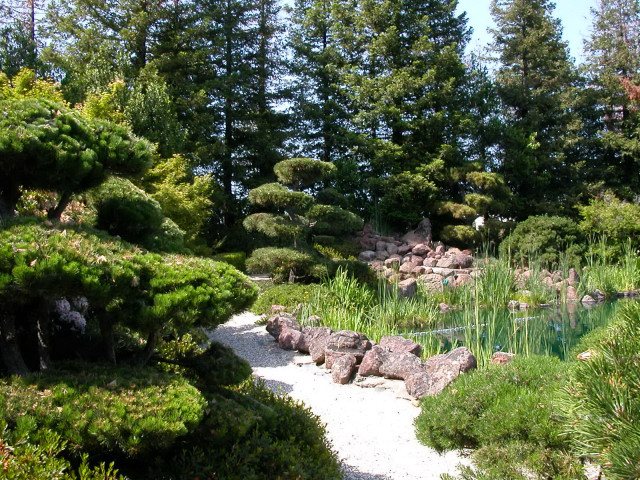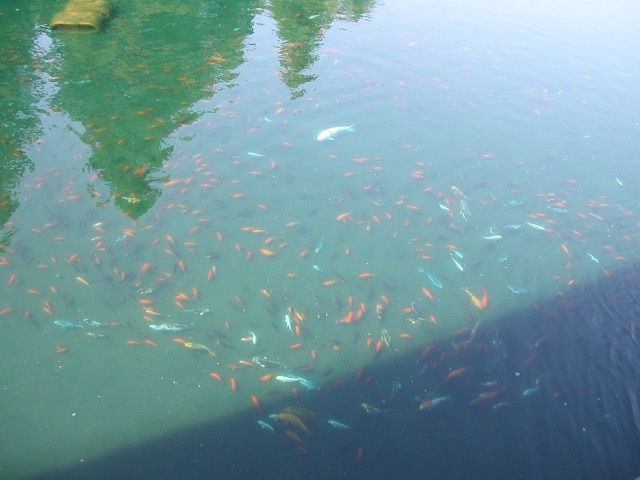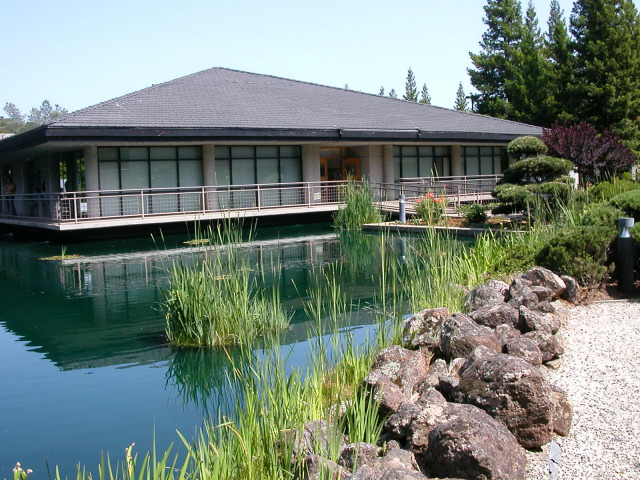SEARCH THIS ISSUE >>> |
Editors note: This article is slightly less than fresh, so some details may have changed.
Gekkeikan Sake (USA) brewery tour
I usually only drink sake when I have sushi at a restaurant, but one of my friends in Vancouver, Washington has taken an enthusiast's interest in the fermented rice beverage that I have slowly been acquiring myself. My friend found a great sake store in San Francisco called True Sake 1 that, as stated in its history statement on the web site, "is the first dedicated sake store outside of Japan, and is also the first sake store in America." The owner of that store, Beau Timken, is often present there and has such an enthusiasm for sake that it's difficult not to feel it yourself if you talk to him.
I'm not in San Francisco that often, so unless I'm having sushi at a restaurant, I'm left to the local supermarket to find any sake. Pickings are slim, but a few months ago in my local market I found a decent (by American and Sacramento standards) sake brewed by Gekkeikan Sake (USA). Gekkeikan Sake is one of the largest sake brewers in Japan. I didn't realize until I looked at the bottle a few days later that Gekkeikan Sake's one and only American brewery is located right here in Folsom, CA 2. Turns out they let visitors take self-guided tours, so I went.
The tour:
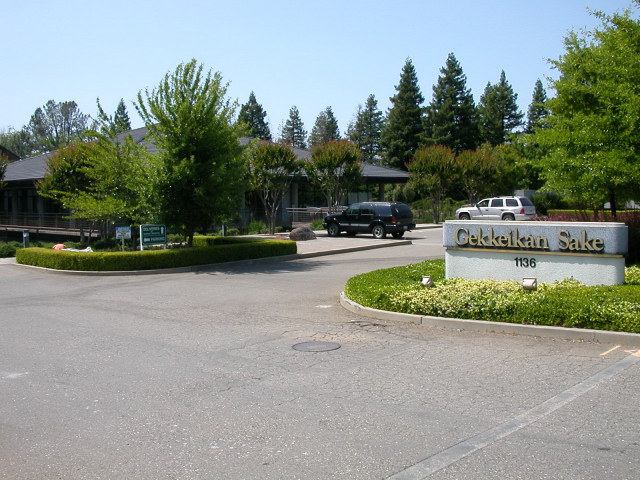
My first impression was that this location was a nice mixture of traditional Japanese style and the modern efficiency necessary for large sake production. Right up front in the parking lot are two large rock gardens, neatly groomed, with a view to the beautiful pond behind and beside the main administrative and visitor center building and tasting room.
This was a Thursday afternoon and I was the only visitor. I walked through the administrative building back to the actual brewery production facility for the self-guided tour. The tour is a hallway down the middle of the production floor with windows on each side and signs at each window describing what process one is observing. I saw that the brewery's koji mold 3 for fermentation is grown on-site by an automated process.
The door to the laboratory area was open and I spoke with a technician who brought out the Brewmaster/Production Manager, Mitsuru Sakamoto, to answer my questions himself! Mr. Sakamoto said that their rice is bought right here in Sacramento and is grown in the nearby Sacramento Valley. Also, this kura (sake brewery) is situated on the American River and their water is taken from there and filtered on-site.
The lab:
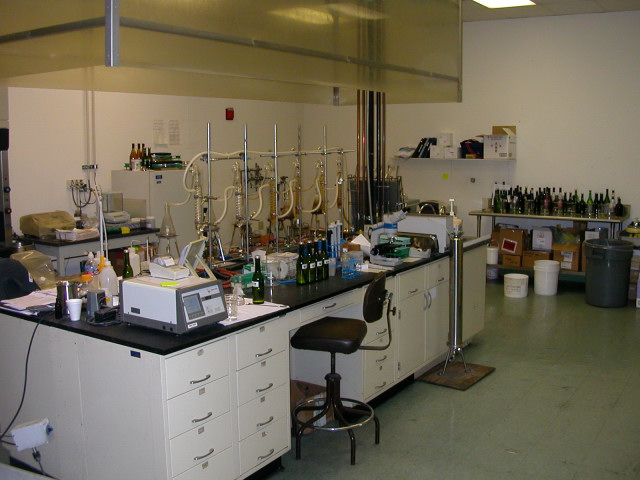
The brewmaster said the yeast they use initially came from their parent company in Japan. Interestingly, he said once the yeast was in the Sacramento area it changed character slightly, in a good way, and that now they make different sakes with both the original and changed yeasts. He said the change in character of the yeast happened to be an acceptable one as opposed to a bad one (which is the usual case with such changes), not that the yeast was necessarily better than what they originally received from the home office. So at most it gives them a little flavor or character variation with the sake produced here in the states. He said a sample was sent back to their parent company for naming and classification but that they do not use the changed yeast in Japan, preferring to keep to the traditional strains. I thanked Mr. Sakamoto profusely for his time and exchanged several bows with him.
After the tour I walked around the pond surrounding the visitor center. It was quiet and peaceful with a waterfall and many Koi and other colorful fish clearly visible. The landscaping was impeccably maintained.
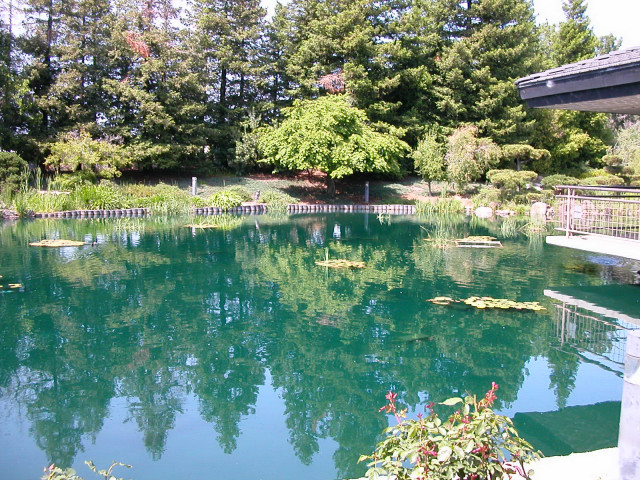
Finally I did visit the tasting room. They made three sakes available: 1) Gekkeikan's "Black and Gold" sake, which is made in the United States, 2) Horin, a very nice Junmai Dai Gingo 4 (indicates a highly polished rice grain used for fermenting) imported from Japan, and 3) Zipang, a Junmai sparkling sake which is naturally carbonated, imported from Japan. All very nice, though the Horin was of course the best (in general, the more the rice grain is milled 5 prior to fermentation, the higher the quality or grade of sake that results), very clean and crisp. The Zipang seemed almost like a sake wine cooler -- definitely a modern variation!
It takes a bit of work and research to become familiar with sake and how to choose one, but with the help of informational web sites and enthusiasts like Beau Timken, it can be a rewarding journey. For reference, True Sake's web site (subscribe to the newsletter for great monthly info and specials); and Sake World 6 an exhaustively thorough site by another American enthusiast and expert, John Gauntner.
(1) www.truesake.com/
(2) www.gekkeikan-sake.com/
(3) www.sake-world.com/html/koji.html
(4) www.sake-world.com/html/types-of-sake.html
(5) www.sake-world.com/html/types-of-sake.html#milling
(6) www.sake-world.com/index.html
--Kevin Howard
